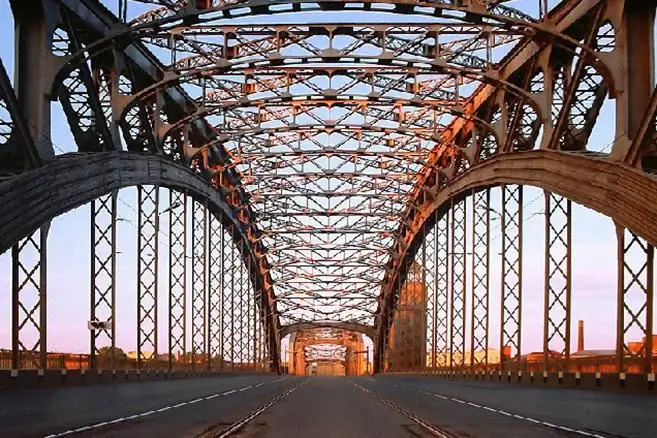- Author Harold Hamphrey [email protected].
- Public 2023-12-17 10:06.
- Last modified 2025-01-24 11:10.
Exotic Cambodia is always new discoveries and unforgettable experiences. Despite the fact that tourism in the country lost in the jungle is at the development stage, the flow of travelers does not dry out. And one of the main types of recreation in the kingdom, located on the Indochina peninsula, is the sightseeing of monuments.
An ancient city with a rich history
The most picturesque city is rightfully recognized as Siem Reap (Cambodia), located in the province of the same name. Having the status of a historical relic, it attracts tourists with a huge number of attractions. The ancient Siem Reap plays the role of a conduit connecting the modern world with past eras.

In the 19th century, Siem Reap in Cambodia was a tiny and unremarkable village. However, after French scientists discovered the ruins of a unique temple on its territory, everything changed. A small settlement has grown and turned into a cozy touristcenter with comfortable hotels. The Vietnam War and the rise to power of the Khmer Rouge - the Cambodian Nazis who killed 3 million people - led to the fact that the country closed its borders to foreigners. And only about 20 years ago, the city, which began to develop actively, acquired its current look, enthralling guests.
Priceless Treasure
The main attraction of Siem Reap in Cambodia is the archaeological site of Angkor, which raises an ancient temple dedicated to the god Vishnu. The historical and religious monument, surrounded by a moat, was seriously damaged by terrorist vandalism, but local residents reconstructed the religious monuments, the beauty of which is breathtaking.

The center of the ancient Khmer Empire is the largest temple complex in the world, on the territory of which more than 200 religious buildings were built. However, its main pearl is the grandiose Angkor Wat, erected by Suryavarman II, the ruler of the kingdom, who lived in the XII century.
Architectural wonder
Few places on our planet can match the grandeur of a priceless architectural masterpiece that claims to be one of the wonders of the world. The temple ensemble, whose area is 200 hectares, symbolizes the sacred Mount Meru, which served as a home for the formidable Vishnu, and five powerful towers on each structure are high peaks.

The largest religious building of mankind, left to us as a legacy, is notintended for the congregation of believers. Built as the home of the gods, it turned into a burial place for kings. Later, Angkor Wat, under unclear circumstances, was abandoned by people. Shrouded in legends and keeping many secrets, it is taken under the protection of UNESCO. And hundreds of thousands of tourists who dream of wandering around the open-air museum and enjoying the amazing creation of human hands rush to the original Siem Reap (Cambodia) every year.
Reviews of tourists about the temple
Guests of the colorful country admit that this is a real miracle that must be seen with their own eyes. A visit to a mysterious corner is like a breathtaking adventure. It is so easy to touch the antiquity, being in an amazing temple, where everything is saturated with a mystical atmosphere. Travelers feel the fabulous aura that the ancient buildings radiate, and admit that this is a wonderful place where it is so easy to relax and forget about problems.
Tonlesap Lake and floating villages
After getting acquainted with a priceless work of architectural art, you can go to Tonle Sap Lake - the largest on the Indochina Peninsula. But the main attraction of the country's "inland sea" are the floating villages, whose population ranges from a few dozen people to five thousand. They were founded at the end of the last century by settlers from Vietnam who fled to Cambodia and Siem Reap in particular. However, according to the law of the country, only indigenous people can live on its territory, and the refugees got out of the situation by building wooden houses standing on pontoons.
Floating villages haveeverything that people need: children go to school, adults visit temples, go to shops, to the market, plant a garden on the water, and a cemetery is equipped in the coastal thickets. Every family has a boat with which the men fish. But the most tangible income for the inhabitants of "lake Venice" comes from tourism, and local entrepreneurs organize excursions for people who are not afraid of the Spartan living conditions.
What do tourists say?
Vacationers in Siem Reap in Cambodia note that all the buildings look rather primitive and more like sheds, and unsanitary conditions reign around. Villagers dump all garbage into the water they drink. Children bathe here, and women do laundry.
There are many floating villages, and they are all different from each other, but the life of the poorest population of Cambodia is the same everywhere. Tourists are surprised how a person can adapt to any conditions of life and not be very sad about this circumstance. The locals are happy with what they have and don't want to change anything.

Siem Reap in Cambodia (photos only confirm this) is a colorful corner with a rich historical past. Its unique attractions impress even experienced tourists. It is very easy to get acquainted with the culture of a distant country - just visit its main pearl.






